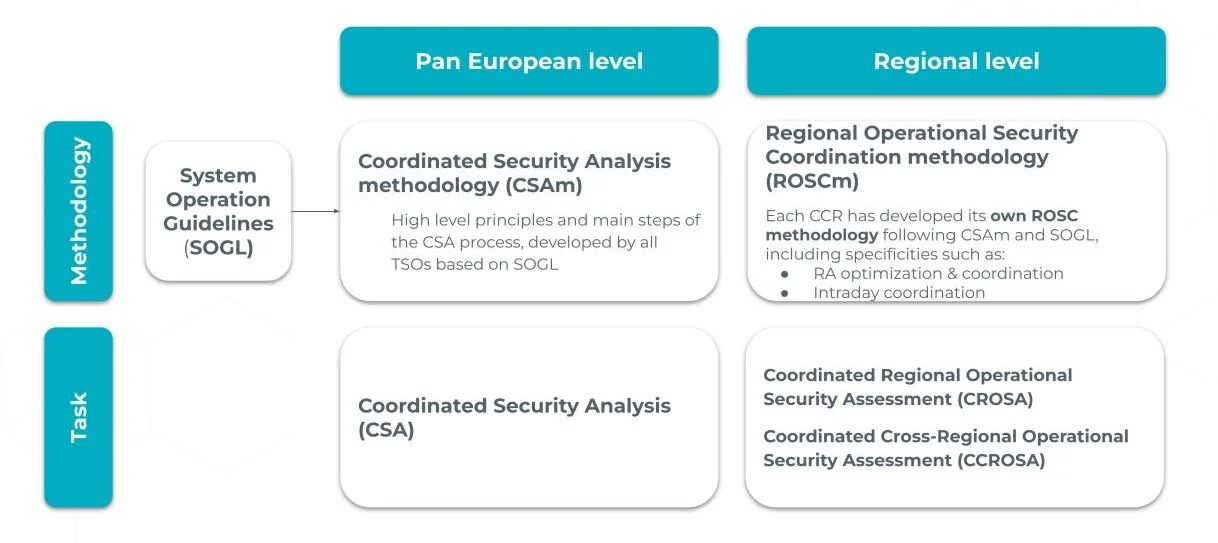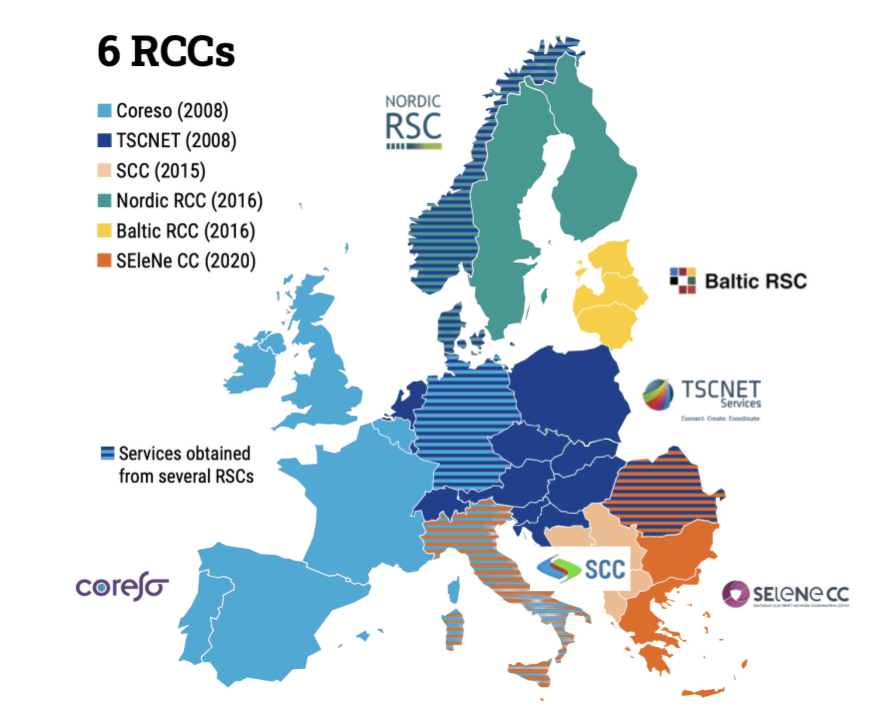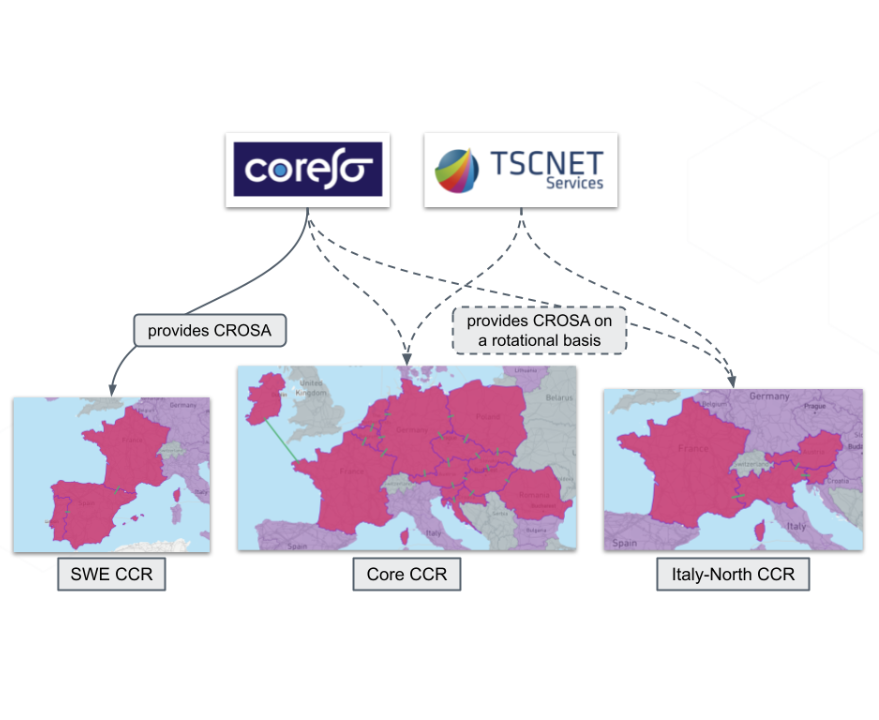Navigating Complexity: ROSC for a Resilient European Grid
/--/uploads/2025/09/The-UMEI-How-a-European-standard-is-simplifying-DSO-interactions-with-local-markets.png)
Introduction
On April 3rd, at N-SIDE Energy, we hosted the second edition of our Energy Connect Event in Brussels. Experts and leaders from Transmission System Operators (TSOs) and Regional Coordination Centers (RCCs) joined us to explore “The Next Frontier of European Integration in Power Markets and Systems”, bringing their own experiences and visions to the table.
One of the two topics of the day revolved around the implementation of the Regional Operational Security Coordination (ROSC) across Europe, exploring its impacts and inherent challenges. With perspectives from both TSOs and RCCs, we left the room with a lot of learnings. Read on to discover the key concepts behind ROSC and our key takeaways from the event.
What are we talking about?
To fully grasp ROSC, it is essential first to understand the Coordinated Security Analysis methodology (CSAm). If a detailed explanation can be found, for example, in the ENTSO-E RCA Annual report or in the Coreso’s Activity Report, the CSAm can be summarized as follows:

Figure 1 – Differences between ROSC and CSA
This pan-European methodology, developed by all European TSOs in alignment with the System Operations Guidelines (SOGL) and approved by ACER, stipulates the high-level principles and main steps for coordinating operational security analysis across Europe. This involves performing analyses to detect operational security violations on the electricity grid and subsequently proposing coordinated Remedial Actions (RAs) to TSOs aimed at resolving the identified constraints. The methodology covers two operational timeframes for coordinated security analyses, as described in the methodology.
ROSC, on the other hand, stands for Regional Operational Security Coordination and serves as the regional implementation of the pan-European CSAm for the day-ahead and intraday timeframes. A specific methodology (ROSCm) is developed by TSOs for each Capacity Calculation Region (CCR) by the local TSOs/RCCs, following the CSAm and SOGL (see articles 75-78), but focusing on the regional specificities, such as:
- The conditions and frequency of intraday coordination
- The methodology to prepare the coordinated remedial actions
More practically, ROSC implementations include legally mandated tasks such as the CROSA (Coordinated Regional Operational Security Assessment) and CCROSA (Coordinated Cross-Regional Operational Security Assessment) tasks. These tasks are applied by the Regional Coordination Centers (RCCs).
One practical example?
Coreso, one of the 6 European RCCs, is appointed to perform the CROSA task for:
- The Core CCR (with TSCNet on a rotational basis)
- The Italy-North CCR (with TSCNet on a rotational basis)
- The South-West Europe (SWE) CCR
 Figure 2 – ENTSO-E. (2024, December 19). ENTSO-E Annual Work Programme 2025. |  Figure 3 – ENTSO-E. (n.d.). CCR Map. |
In this context, a key initiative is the CorNet Programme, initiated by Coreso and TSCNET, to develop a common platform and tools for the efficient implementation of specific RCC tasks, among which the CROSA.
What does it include?
ROSC includes several sub-tasks and processes, as defined in the SOGL. Among which:
|  |
Why is the ROSC implementation complex, and how to overcome the challenges?
The implementation of ROSC across each CCR is ongoing and is inherently extremely complex, with multifaceted challenges from various domains. Let’s deep-dive into some of the most critical aspects highlighted during the N-SIDE energy connect event.
- Data standardizationA Common Grid Model (CGM) constitutes one of the main input data of ROSC. Building CGMs is, however, a complex task that requires collecting, quality checking, and merging individual grid models (IGMs) from all European TSOs. For this purpose, the recent CGMES data format (Common Grid Model Exchange Standard) allows for very precise grid modelling. But the format is also very complex, making the task of merging IGMs even more complex.Building CGMs in a qualitative and standard way is, however, a fundamental prerequisite for successful ROSC implementation.
- Cost sharingSolving security violations with Remedial Actions often has a cost, but who should be paying for what? Specifically agreed cost-sharing methodologies must complement ROSC methodologies to address the complex cost-sharing mechanisms related to the Remedial Actions, and ensure fairness among the involved parties.
- Time and mathematical complexityThe CROSA has a strict and precise timing defined for its various steps. Ensuring timely completion within the tight operational windows requires both (1) precise coordination among multiple entities and (2) very efficient algorithms. The complex mathematical problem of Remedial Actions Optimization (RAO) when security violations are detected is a good example of these challenges. To overcome them, it is imperative to proceed step by step and simplify when possible. Compromises between intuitiveness, efficiency, computation time, and optimality need to be taken and agreed on by the different parties.
- Open conceptual topics and Impact on processesVarious processes are strongly tied and interconnected within the energy industry. One of the critical aspects that emerged from the discussions is the influence of topics such as Cross-Zonal Balancing Capacity Markets, which need to be analyzed and considered in the ROSC implementation.Effectively managing these complexities requires adapting methodologies, as well as measuring the impacts through dedicated studies.
- Standardization of TSO processes, Integration, and building confidenceOver the past decades, TSOs have developed their own philosophies and specific operational practices, which have to be integrated into a single coordinated and trusted approach. To help a smooth integration, discussions during the event highlighted that extensive tests and parallel runs are key, while also ensuring enough transparency, explainability, and interpretability in the ROSC results.
ROSC for a resilient European grid
In view of all these challenges, is the implementation of ROSC really necessary? The answer is yes.
- Current operational practices, often relying on legacy systems, have highlighted critical areas for improvement, particularly following past large-scale incidents such as the 2006 blackout, which left 15 million European households disconnected and the main causes highlighted by the UCTE Final Report were the non-fulfillment of the N-1 criterion in security assessment and insufficient inter-TSO coordination.
- Moreover, energy current challenges such as the integration of renewables, application of regulations and the increase of congestion, reinforce the need for better regional coordination.
Currently, ROSC is under implementation across European CCRs, and promises to revolutionize grid security. Once fully implemented, ROSC will provide a harmonised and more robust approach to grid security, resulting in several key improvements. Highlights from the N-SIDE energy connect event include:
- Unified security assessments and a common understanding of overload issues, ensuring a single source of truth.
- Clear and Strict timelines for each main step and subprocess.
- Cost-effective remedial actions with fair cost-sharing models.
- Improved TSO Coordination and transparency
- Enhanced grid assessment, including voltage and dynamics studies, providing a more comprehensive picture of grid stability
- Optimised market operations: by ensuring congestion-free grid models, ROSC will provide a better starting point for Intraday Capacity Calculation (IDCC) and Balancing Timeframe Capacity Calculation (BTCC), which currently can be limited by pre-congestions in day-ahead security analysis.
Although implementing ROSC comes with its challenges, its potential for efficient power grid management is enormous. By embracing a step-by-step approach and learning along the way, ROSC promises, once implemented, a more integrated, secure, and resilient electricity grid, unlocking its full potential for a sustainable energy future.
/--/uploads/2025/08/GMA_2-1.jpg)
/--/uploads/2025/08/NVE.jpg)